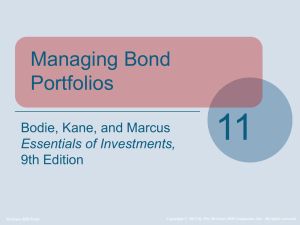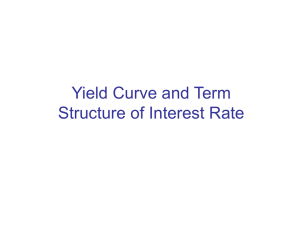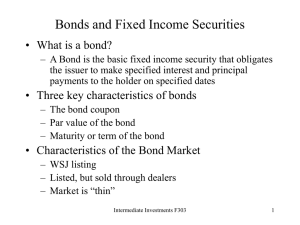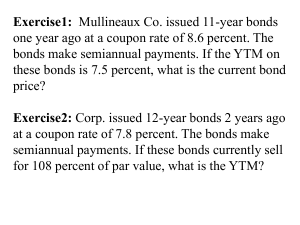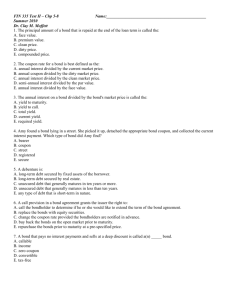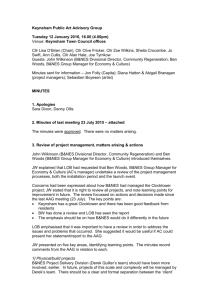10-11 Analysis under certainty
advertisement
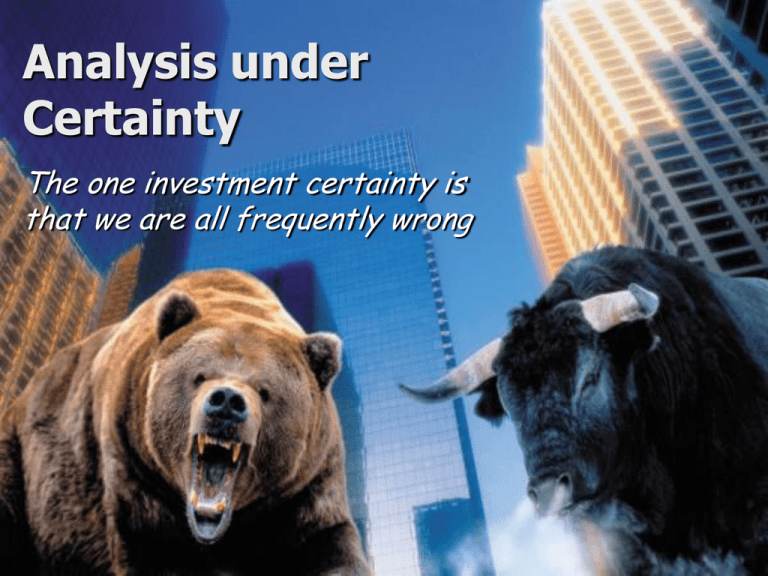
Analysis under Certainty The one investment certainty is that we are all frequently wrong Up to now Financial markets and instruments – Specifics of stocks, bonds, and derivatives – Trading process – Financial intermediaries NES FF 2005/06 2 Plan Analysis under certainty – Term structure of interest rates – Fixed income instruments • • Pricing Risks – Capital budgeting NES FF 2005/06 3 Definitions of rates Reinvestment: – Simple vs compound interest Frequency of compounding: – Nominal (coupon) rate vs effective (annual) rate Continuous compounding: – Log-return NES FF 2005/06 4 Definitions of rates (2) Yield to maturity / internal yield / bond yield – Rate that equates cash flows on the bond with its market value – Return earned from holding a bond to maturity • Assuming reinvestment at same rate Par yield – Coupon rate that causes the bond price to equal its face value Current yield – Annual coupon payment divided by the bond’s price – Often quoted but useless NES FF 2005/06 5 Definitions of rates (3) Zero rate – YTM of a zero-coupon bond – How to get zero rates from coupon bond prices? – Bootstrapping method: coupon bond as a ptf of zerocoupon bonds Spot rate – One-period zero rate Forward rate – Rate on a one-period credit from T to T+1 FF 2005/06 NES 6 Term structure of interest rates Relationship between yields and maturities – For bonds of a uniform quality (risks and taxes) – E.g., Treasury / Baa Equivalent ways to describe TSIR: – Prices of zero-coupon bonds: P(t,T), with P(T,T)=1 – Zero rates: y(t, T) – Forward rates: f(t, T) Upward sloping yield curve: – Fwd Rate > Zero Rate > Par Yield NES FF 2005/06 7 Theories of the term structure Expectations theory: – Unbiased expectations hypothesis: f(t, T) = Et[r(T)] – Term structure is explained by expected spot rates • Upward sloping yield curve: signal that spot rate will increase Liquidity preference theory: – Investors demand a premium for bonds with higher risk • Long-term bonds require a liquidity premium – Upward sloping yield curve: forward rates higher than expected future zero rates NES FF 2005/06 8 Theories of the term structure (2) Preferred habitat: – Investors try to match the life of their assets with liabilities – There is a premium for maturities with insufficient demand Market segmentation: – Different rates determined independently of each other • • SR%: D – corporations financing sr obligations, S – banks LR%: D – corporations financing lr inv projects, S – insurance co-s, pension funds – Investors don’t react to yield differentials between the maturities NES FF 2005/06 9 Empirical estimation of TSIR Discrete rates: – Regression P = cD1 + cD2 + … + (c+F)DT where Dt = 1/P(0,t) = 1/y(0,t)t Continuous rates: – Regression P = Σt=1:T ct (a0+a1t+a2t2+…) – P = a0[Σt=1:Tct]+a1[Σt=1:Ttct]+a2[Σt=1:Tt2ct]+… NES FF 2005/06 10 Modeling changes in bond prices Due to passage of time: – E.g., flat yield curve: ΔP = r P0 Unanticipated shift in the TSIR: – Need to approximate the function P = f(y) – Duration: sensitivity of a bond’s price to the change in the interest rates NES FF 2005/06 11 Macaulay’s duration Wtd-avg maturity of bond payments – Generalized maturity for coupon bonds, D ≤ T Elasticity of a bond’s price wrt ytm – The larger the duration, the riskier is the bond For small changes in %: ΔP ≈ -D P Δy/y = -[D/y] P Δy – D* = D/y: modified duration NES FF 2005/06 12 Macaulay’s duration (2) Properties: – C, coupon: – – Y, %: – – T, maturity: + Limitations: – Assumes horizontal TSIR – Applies only to small changes in % NES FF 2005/06 13 Duration modifications Convexity Fisher-Weil duration – For parallel shifts of (non-horizontal) TSIR Non-parallel shifts: – Two types: LR% usually more stable than SR% – Analytical approach: • E.g., assume d ln y(t,T) = KT-t+1 d ln r(t) – Empirical approach: • Separate estimation of duration for sr and lr % NES FF 2005/06 14 Conclusions



